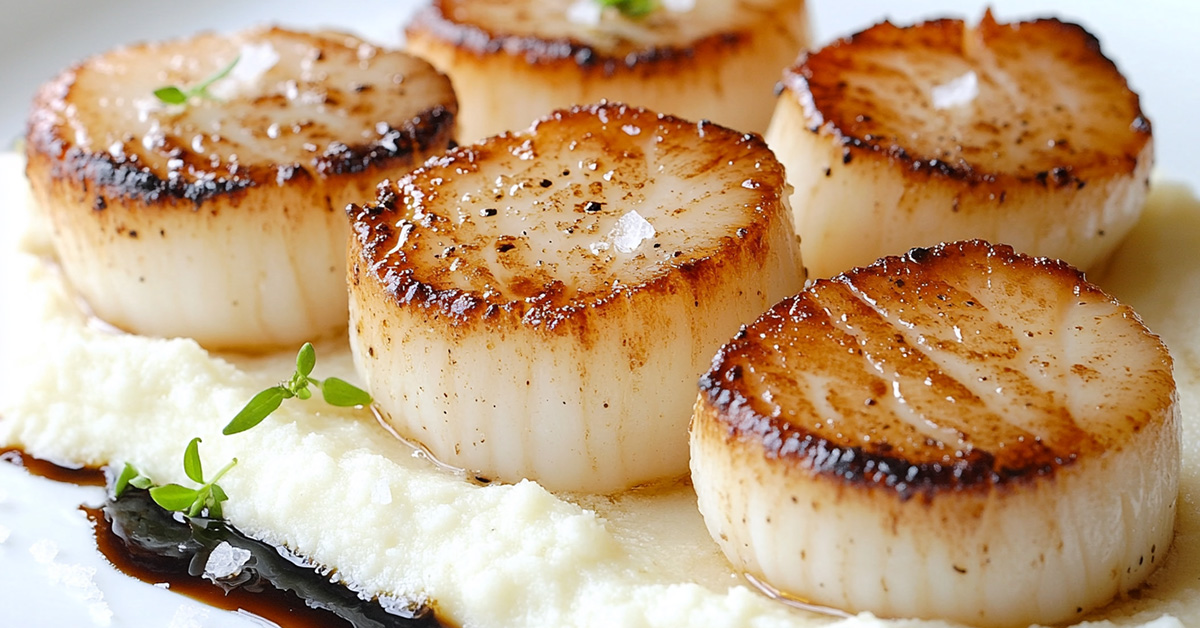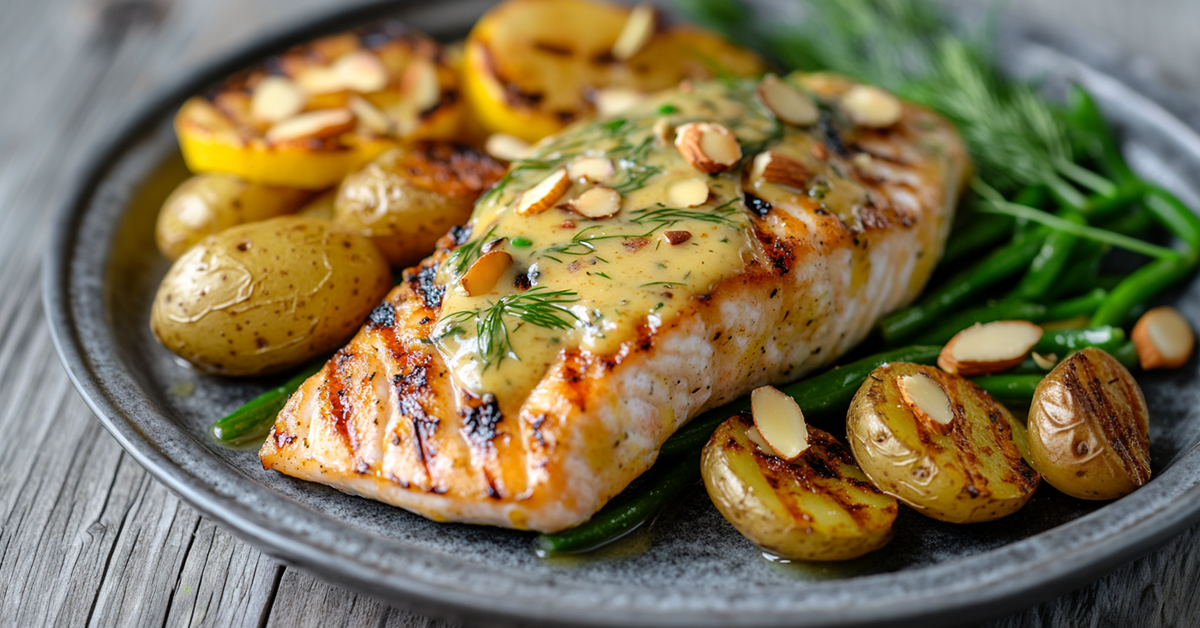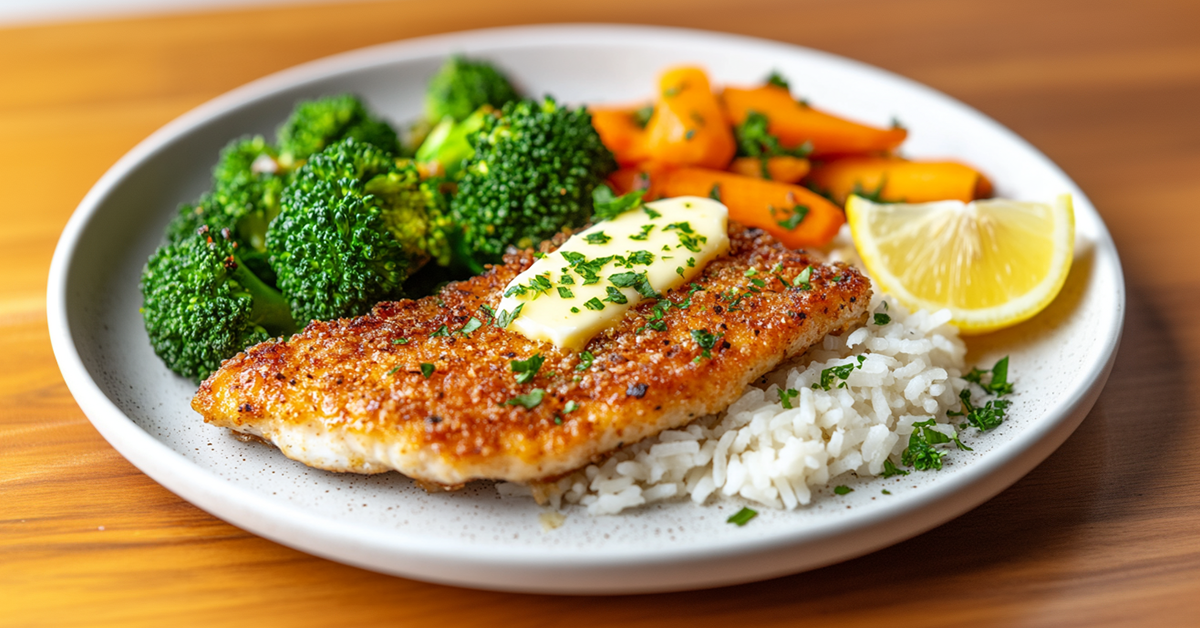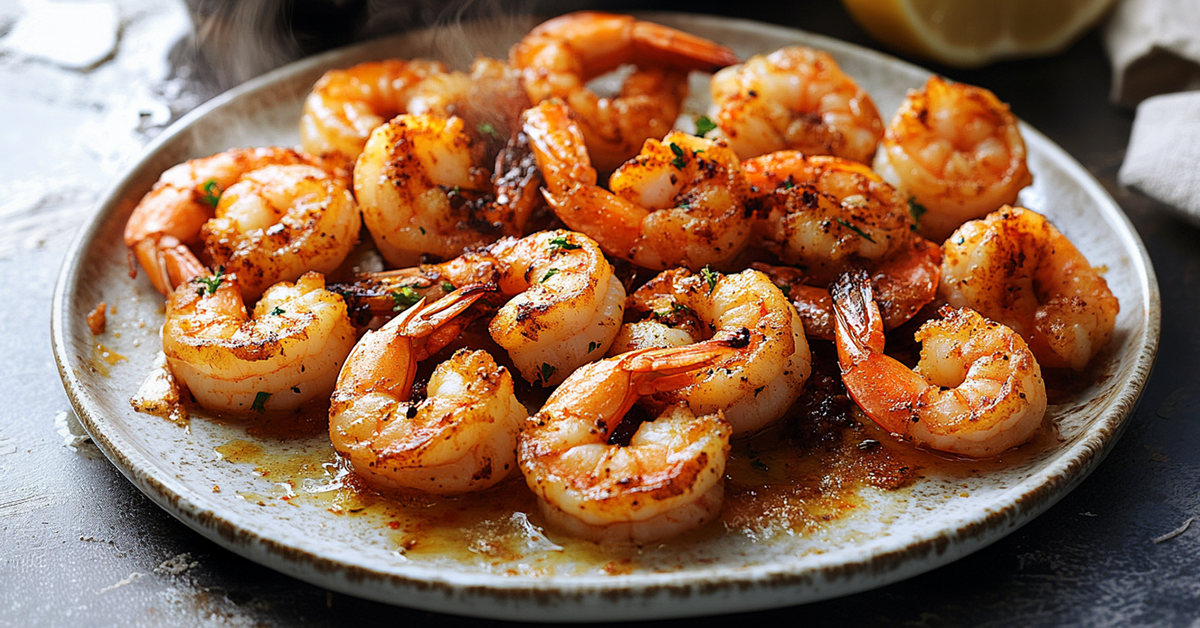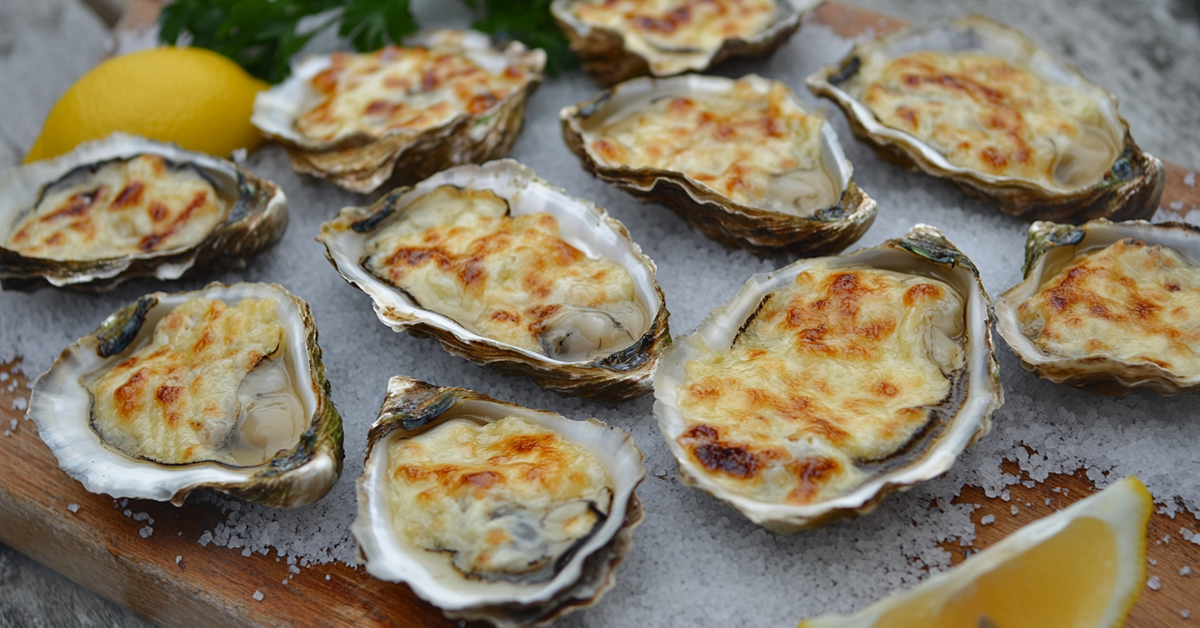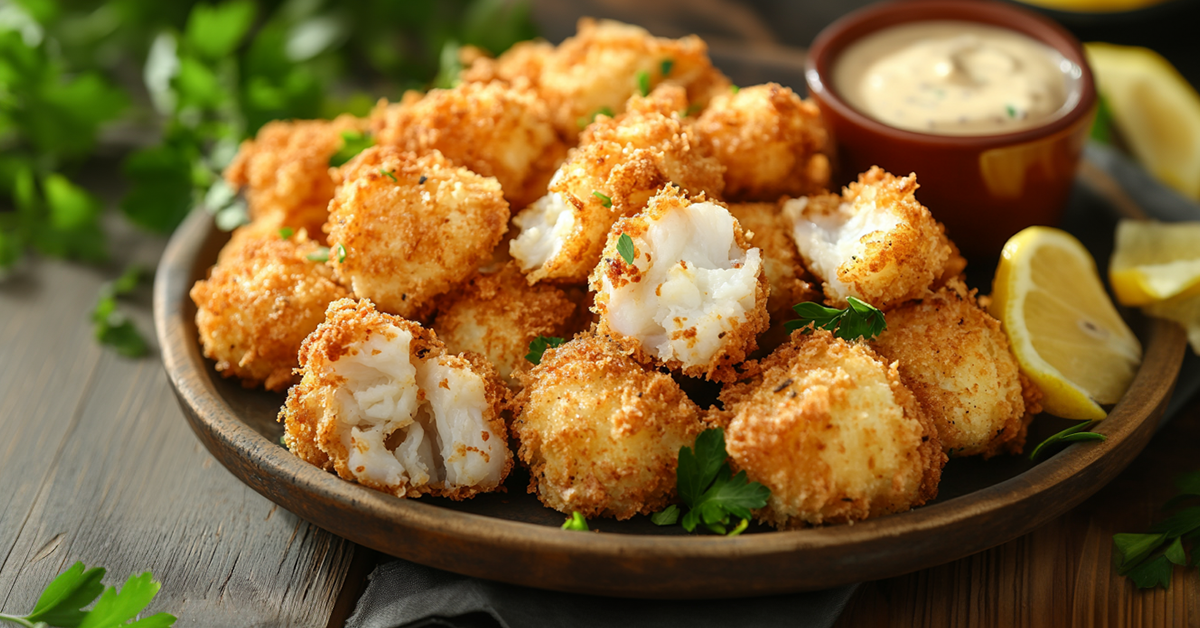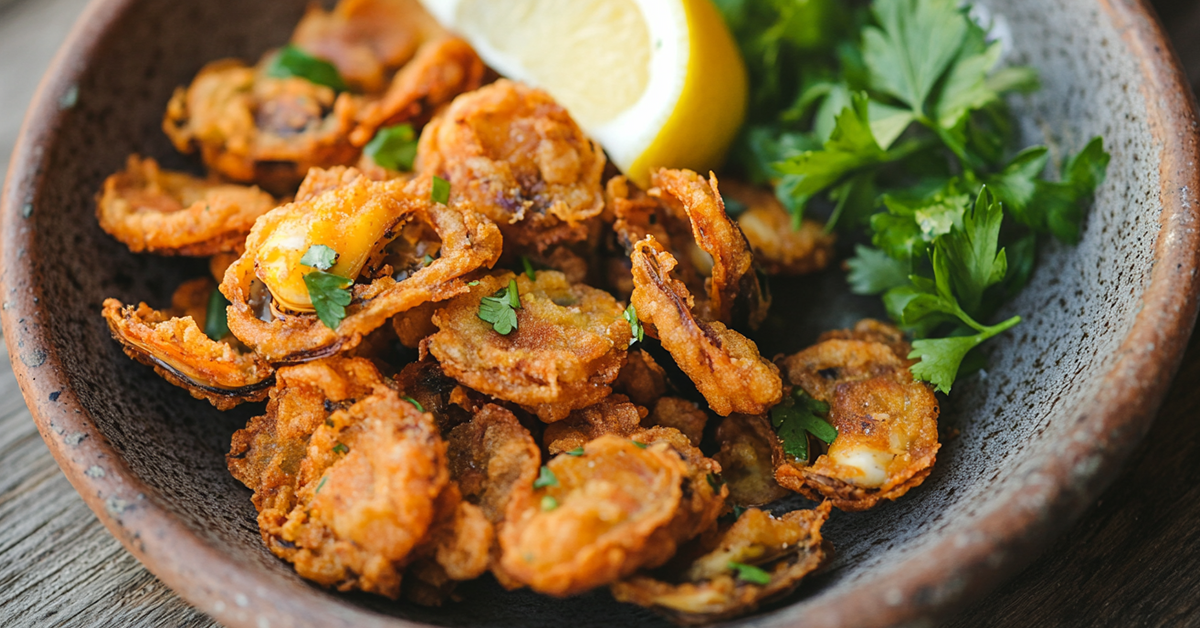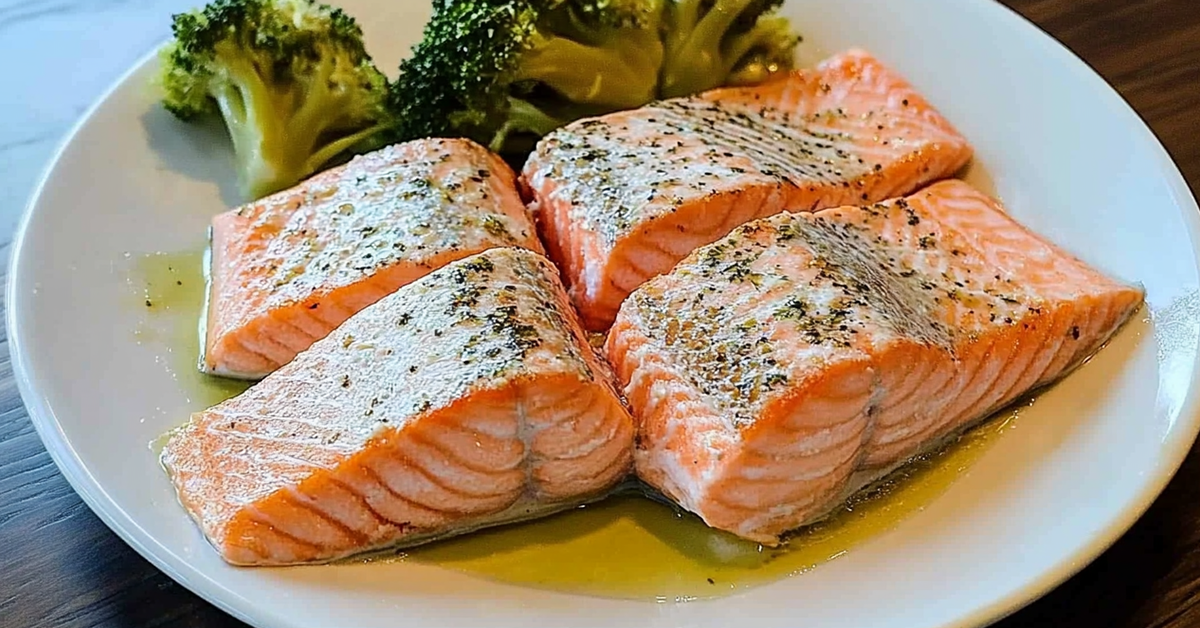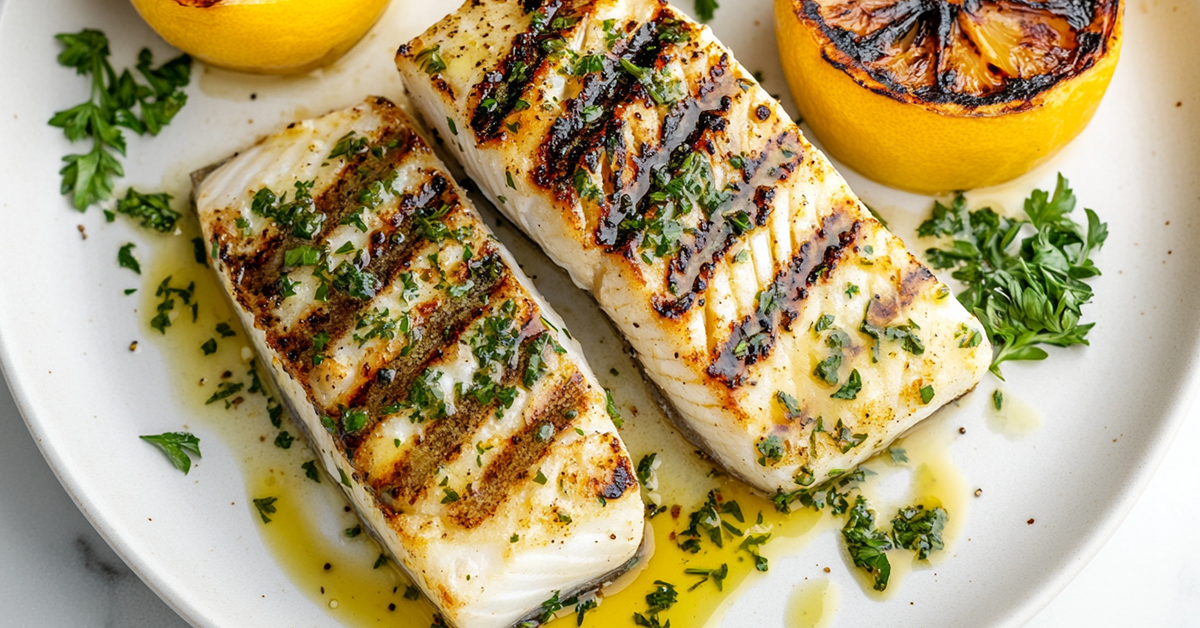Cooking scallops at home can be tricky. Many home cooks know the frustration of ending up with rubbery, overcooked scallops. Getting that golden-brown sear right feels like a skill reserved for professional chefs.
Sous vide scallops are the answer to this cooking challenge. The temperature control will give you tender and consistent results every time. Your scallops keep their natural sweetness and delicate texture.
This detailed guide shows you each step to cook perfect sous vide scallops. You’ll learn everything from picking fresh scallops to getting that perfect sear. The technique works great with both fresh and frozen scallops. You’ll find how this method changes seafood cooking from a challenge into a simple task.
Table of Contents
Why Choose Sous Vide Scallops?
Precision makes all the difference in cooking delicate seafood. Sous vide cooking gives you exact temperature control and consistency that traditional cooking methods simply can’t match.
Vacuum-sealed bags and precisely controlled water baths provide several unique advantages:
- Perfect Doneness Every Time: The water bath brings your scallops to the exact desired temperature throughout, eliminating the risk of overcooking
- Improved Flavor Infusion: Vacuum sealing with butter or oil and seasonings helps preserve juices and intensify flavors
- Extended Storage Options: Properly pasteurized scallops can stay fresh in the refrigerator for up to a week
- Consistent Results: The precise temperature control ensures even cooking from edge to edge
You might wonder if sous vide is essential for scallops. Traditional pan-searing works, but these delicate morsels overcook easily. Sous vide delivers perfectly cooked interiors every time, and you can still achieve that beautiful golden-brown sear afterward.
The water bath’s gentle heat transforms your scallops’ texture. It carefully breaks down the connective tissues while preserving the scallops’ natural moisture, creating an incredibly tender and succulent bite. The vacuum-sealed environment concentrates natural flavors, making each scallop taste more intense and delicious.
Extended shelf life stands out as a practical benefit. Proper sous vide cooking can substantially extend your scallops’ freshness – up to three weeks in the refrigerator. This becomes valuable especially when you have meal prep plans or want to maximize your seafood purchases.
The method gives you remarkable control over food safety. Precise temperature control effectively stops bacterial growth, while vacuum sealing eliminates cross-contamination risks. You can enjoy restaurant-quality scallops with complete peace of mind.
Sous vide offers an extra advantage with frozen scallops. You can cook them straight from frozen by adding 15 minutes to your cooking time. This makes it the quickest way to prepare meals for busy home cooks.
Read also: Sous Vide Swordfish Recipe
Selecting the Best Scallops for Sous Vide
Quality scallops are vital to get the best results from your sous vide cooking. Your local seafood market has many options to choose from. Knowing what to look for will make all the difference in your dish.
Size Matters Sea scallops come in sizes that tell you how many you get per pound. You’ll want larger sea scallops for sous vide cooking, which usually give you 10 to 40 per pound. These bigger ones hold their texture better as they cook.
Fresh vs. Frozen Fresh scallops might seem like the best choice, but don’t rule out frozen ones. High-quality individually quick frozen (IQF) scallops work great, especially when fresh seafood isn’t easy to find. Freezing helps keep them fresh during shipping.
Here’s what to look for when you buy scallops:
- Day Boat Designation: “Day Boat” scallops are your best bet – these boats return to shore daily and bring the freshest catch
- Packaging Type: Pick “dry-packed” instead of “wet-packed” scallops. Wet-packed ones have added phosphates that change how they taste and feel
- Appearance: The best scallops look firm and slightly glossy
- Sustainability: Bottom culture or off-bottom culture farmed scallops are the most environmentally responsible choice
Storage Considerations Fresh scallops spoil quickly. Properly frozen scallops are your best bet if you can’t cook them right away. Good storage keeps their quality intact and gives you more time to plan your cooking.
A Note on Frozen Scallops Look for individually quick-frozen scallops rather than block-frozen ones. You can thaw just what you need, and they stay in better shape. Sous vide cooking works great with both fresh and frozen scallops – just add some extra cooking time for frozen ones.
Quality scallops cost more, but they’re worth every penny. Their rich protein content (62-68%) and nutrients make them both tasty and healthy. Sous vide cooking helps keep more of their natural flavors and good nutrients compared to other cooking methods.
Read also: Sous Vide Shrimp Recipe
Tools and Equipment Needed for Sous Vide Scallops
You don’t need a complete kitchen makeover to start sous vide cooking. Perfect sous vide scallops require just a few basic tools.
Essential Equipment:
- A sous vide circulator (immersion circulator)
- A cooking container or large pot
- Sealing bags (either vacuum-sealed or freezer-grade zip-top)
- A pan or torch to sear
Your water heating device stands out as the core piece of equipment. A sous vide circulator typically costs under $200 and lets you control temperature with precision. This device needs the biggest investment, but you’ll need it to maintain exact temperatures your scallops require.
You have two main choices to seal your scallops. The quickest way is using high-quality freezer-grade zip-top bags. These bags can handle sous vide temperatures well. The water displacement method removes air effectively and saves money too.
A vacuum sealer might be worth the investment if sous vide becomes your go-to cooking method. Though not essential, vacuum sealers create the tightest possible seal and help food last longer. They work great especially when you have batch-cooking plans or freeze ingredients often.
Your cooking container doesn’t need fancy features. A large pot works well as you start. A dedicated container with better insulation and a fitted lid makes sense once sous vide becomes your regular cooking method.
The final searing step gives you several options. Your stovetop pan does the job perfectly. Cast iron pans are popular among home cooks because they retain heat well. A culinary torch gives you precise control and minimizes overcooking during searing.
Note that ‘sous vide’ means ‘under vacuum,’ but achieving a perfect vacuum seal isn’t the biggest concern. Removing as much air as possible matters more because it ensures good contact between heated water and food. Heat transfers more efficiently this way, cooking scallops evenly.
Vacuum-sealed bags are a great way to get extra benefits in storage and food safety. They speed up marinating as vacuum pressure pulls seasonings into food quickly. Your batch-cooked scallops stay fresh longer in the refrigerator when vacuum-sealed.
You may like: Sous Vide Halibut Recipe
Preparing Scallops for Sous Vide Cooking
Your perfectly cooked sous vide scallops start with the right preparation. The best possible results depend on how well you clean and prepare your scallops before cooking.
Cleaning and drying scallops properly
Give your scallops a quick rinse under cold water to get rid of sand or shell bits. Success depends on getting your scallops as dry as possible. Put them on a paper towel-lined plate and pat them dry. You can salt them and let them rest in your refrigerator from 10 minutes to overnight to remove extra moisture. The longer they rest, the more moisture will come out.
Removing the side muscle (if needed)
Look at each scallop for the side muscle – a small, tough rectangular or crescent-shaped piece on the side. Not every scallop has this muscle attached since it can get dislodged during processing. You’ll improve your eating experience by removing it. Just pinch the muscle between your thumb and forefinger and pull it away from the scallop. The side muscle is safe to eat but becomes tough when cooked.
Seasoning tips and marinade options to improve flavor
Simple seasoning works best with sous vide scallops. Here are some proven combinations that add flavor without overwhelming:
- Simple seasoning: A light sprinkle of salt and pepper
- Classic combination: Olive oil, lemon peel, and tarragon
- Aromatic option: Garlic and butter for gentle poaching
Put your seasoned scallops in your chosen bag in a single layer. This will give a consistent cook and proper heat distribution. Use the water displacement method to remove air before sealing if you’re using a zip-top bag.
Pro Tip: Scallops have a delicate flavor that’s easily overwhelmed, so go easy on the seasoning. Old Bay seasoning can work well if you want to try bolder flavors.
You can keep your cooked sous vide scallops in an airtight container in your refrigerator for up to three days. This makes them ideal for meal prep or dinner parties.
Keep in mind that moisture prevents a good sear. Make sure your scallops are completely dry before putting them in the pan if you plan to sear them after sous vide cooking.
Read also: Smoked Scallops Recipe
Cooking Sous Vide Scallops: Temperature and Timing Guide
Getting restaurant-quality scallops at home starts with the right sous vide bath setup. Let’s take a closer look at the temperature and timing details that will help you become skilled at this cooking method.
Optimal temperature settings for sous vide scallops
122°F (51°C) gives you the perfect temperature sweet spot for sous vide scallops. This setting will give a delicate texture while cooking them perfectly. The water bath should reach the target temperature before you add your scallops. This vital step helps maintain precise temperature control and prevents uneven cooking.
Cooking time recommendations based on size and thickness
Temperature matters, but timing plays an equally significant role. Here’s a simple guide to help you get the best results:
| Scallop Type | Cooking Time | Temperature |
|---|---|---|
| Fresh | 30 minutes | 122°F (51°C) |
| Frozen | 45 minutes | 122°F (51°C) |
Standard-sized sea scallops need about 30 minutes in the water bath. This timing creates the perfect balance between thorough cooking and tender texture.
Pro Tip: You might want to place your scallops in an ice bath before searing them. This step prevents overcooking during the searing process.
Adjustments for sous vide frozen scallops
Frozen scallops don’t need thawing – they go straight into the bath. Just add 15 minutes to your cooking time. Your frozen scallops will need about 45 minutes total.
Sous vide cooking gives you peace of mind about overcooking. The controlled temperature environment keeps your scallops at the perfect temperature, even with the extra time needed for frozen ones.
Key points to remember:
- Wait for the proper temperature before adding scallops to the water bath
- Adjust cooking time between 20-45 minutes based on scallop size and starting temperature
- Your scallops should stay completely submerged in the water bath for consistent results
The temperature can go up to 124°F (51°C) if you prefer your scallops slightly more done. Be careful about higher temperatures though – they might affect the delicate texture that makes sous vide scallops special.
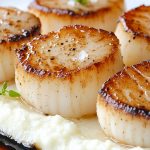
Sous Vide Scallops Recipe
- Total Time: 40 minutes
- Yield: 4 servings 1x
Description
Make your kitchen feel like a high-end restaurant with this foolproof sous vide scallops recipe. You’ll get tender, perfectly cooked scallops with a beautiful golden sear that matches any fine dining experience.
You can create restaurant-quality scallops right in your kitchen with this precise cooking method. The gentle sous vide process will give you tender and juicy scallops that keep their natural sweetness. A quick sear at the end creates a beautiful golden crust while the inside stays perfectly cooked.
Ingredients
- 1 pound large sea scallops.
- Salt and freshly ground black pepper.
- 1 tablespoon extra virgin olive oil.
- 1 tablespoon unsalted butter.
- Optional aromatics: lemon peel, fresh tarragon.
Instructions
- Set your sous vide machine to 123°F (51°C) and let the water reach temperature.
- Season your scallops with salt and pepper and place them in a single layer in your vacuum-seal or zipper-lock bag.
- Add olive oil to the bag and seal it using either a vacuum sealer or the water displacement method.
- Submerge the sealed bag in the preheated water bath and cook for 30 minutes for fresh scallops or 45 minutes for frozen.
- Remove scallops from the bag and pat them really dry with paper towels.
- Heat butter in a large skillet over medium-high heat until it stops foaming.
- Sear the scallops for about 40 seconds total and turn once to get a golden-brown crust on both sides.
Notes
– Add 15 minutes to the cooking time for frozen scallops.
– Your scallops must be completely dry before searing to get the best crust.
– Keep scallops in a single layer during sous vide cooking so heat spreads evenly.
– The internal temperature of 123°F gives you the perfect tender-firm texture.
- Prep Time: 10 minutes
- Cook Time: 30 minutes
- Category: Seafood
- Method: Sous Vide
This recipe brings together precision cooking with simple ingredients to create an impressive dish that works for special occasions and elegant weeknight dinners. Sous vide cooking’s beauty lies in its consistency – your results will be perfect every time.
Health Benefits of Sous Vide Scallops
Sous vide scallops taste amazing and provide remarkable health benefits. These make them an excellent choice for nutrition-conscious food lovers. The sous vide method doesn’t just create a gourmet meal – it preserves vital nutrients that other cooking methods might destroy.
Scallops pack powerful nutrition. A 100-gram serving gives you 24 grams of lean protein, making them perfect to maintain muscle health. They contain rich amounts of essential nutrients including:
- Selenium – significant for reproductive and thyroid function
- Vitamin B12 – supports nervous system health
- Magnesium and potassium – vital for cardiovascular health
- Taurine – beneficial for blood pressure and cholesterol levels
- Iron, calcium, and zinc – essential minerals for overall health
Reference: Verywillfit
Sous vide cooking boosts these nutritional benefits in several unique ways. Cooking scallops sous vide at 75°C will give a strong water-holding capacity. Water-soluble nutrients stay locked inside instead of being lost through evaporation or leaching. [Reference]
Your sous vide-cooked scallops retain substantially more beneficial compounds compared to traditional cooking methods. The vacuum-sealed environment stops oxidation reactions and contamination, which helps preserve nutrients and flavor. This preservation works especially well for protein content, as gentle cooking prevents muscle protein degradation that happens with high-heat cooking.
Food Safety and Storage Benefits Sous vide cooking preserves nutrients and ensures food safety. The controlled temperature environment reduces microbial degradation, while vacuum-sealed packaging prevents cross-contamination during storage. You can store cooked scallops safely in the refrigerator for up to 15-20 days, substantially longer than traditionally cooked seafood.
Heart-Healthy Choice Sous vide scallops fit perfectly with heart-healthy eating patterns. They contain low saturated fat while providing beneficial polyunsaturated fats (PUFAs) that researchers have linked to decreased cardiovascular mortality. Gentle sous vide cooking preserves these beneficial fats that high-heat cooking methods might damage.
Precise temperature control means no extra oils or fats during cooking. This helps maintain a healthy diet without sacrificing flavor. People watching their calorie intake or managing cholesterol levels will find this especially beneficial.
Pregnancy-Safe Seafood Option Expectant mothers can safely enjoy sous vide scallops in their diet. The American College of Obstetricians and Gynecologists lists scallops as a ‘best’ choice for pregnancy. Precise temperature control ensures food safety while preserving beneficial nutrients like iron, vitamin B12, and protein – all vital during pregnancy.
Sous vide cooking maintains stable physicochemical properties. You get maximum nutritional benefit from scallops while enjoying a safer, more consistent cooking process. This combination of safety and nutrient retention makes sous vide scallops perfect for anyone wanting high-quality protein and essential nutrients in their diet.
You may like: Sea Bass Sous Vide with Herbs and Citrus
Conclusion
Sous vide cooking changes scallop preparation from a challenging task into a reliable, foolproof process. This precise cooking method creates tender, perfectly cooked scallops and preserves their natural sweetness and nutritional benefits.
The gentle, controlled temperature environment helps your scallops retain more nutrients and flavor than traditional cooking methods. Vacuum-sealed preparation substantially extends storage life, which makes meal planning quick and simple.
Learning to cook sous vide scallops lets you create restaurant-quality seafood dishes at home. You’ll achieve professional results with the right temperature settings, timing guidelines, and proper preparation techniques. This method will give a perfect balance of tender texture and golden-brown sear that impresses both family and guests, whether you use fresh or frozen scallops.
Quality ingredients and proper preparation are the foundations of exceptional results. Fresh or properly frozen scallops, precise temperature control, and a careful sear – these simple steps help you create seafood dishes worthy of fine dining establishments in your kitchen.

